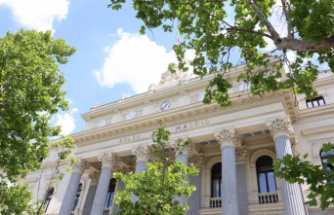Caption
Close
Albany
The impact of World War I on New York and the Capital Region is a story that state and local museums are telling as the centennial of the U.S. entry into the war approaches.
"New York state contributed more men, money and materials than any other state," said Aaron Noble, a state senior historian.
Seventy-five percent of the American Expeditionary Force left for Europe through the port of New York. One in 10 of all U.S. casualties were New Yorkers. The holes they left behind rippled throughout their families a century ago and to this day.
"It was a war of uncles. They were young men who died without having any children," said Mary Zawacki, curator of "Together Until the End: Schenectady in World War I" for the Schenectady County Historical Society.
From the state perspective at the State Museum in Albany and the New York State Military Museum and Veterans Research Center in Saratoga Springs to the local view at the Rensselaer County Historical Society and the Schenectady County Historical Society, the story of the Great War is one that has been forgotten by many.
"A Spirit of Sacrifice: New York State in the First World War" at the State Museum draws on a variety of records and artifacts from the State Library and State Archives. The plan was for an exhibit of 1,200 square feet, but the state's story is so broad that the space was tripled to 3,600 square feet. World War I was the first time that media was used extensively for propaganda, and there will be scores of posters from the war, Noble said.
History on view
These four major exhibits in the Capital Region tell the state and local story of World War I:
State Museum: "A Spirit of Sacrifice: New York State in the First World War," opens April 15. 222 Madison Ave., Albany. 474-5877, www.nysm.nysed.gov.
Rensselaer County Historical Society: "Doughboys to Dylan: The Changing Time on the Rensselaer County Homefront," opens Feb. 24, 57 Second St., Troy. 272-7232. www.rchsonline.org.
Schenectady County Historical Society: "Together Until the End: Schenectady in World War I," open, 32 Washington Ave., Schenectady. 374-0263, www.schenectadyhistorical.org.
New York State Military Museum: "Fiery Trial and Sacrifice — New York and the First World War" part of permanent exhibit, 61 Lake Ave., Saratoga Springs. 581-5100, https://dmna.ny.gov/historic/eventsExhibits.htm.
There's also the show of uniforms, such as one from the 165th Infantry Regiment, formerly New York's 69th, known as the Fighting 69th. Noble said most New York National Guard units retained their state identity and did not happily assume their new federal regimental numbers.
New York's 15th Regiment became the 369th Regiment, or Harlem Hellfighters. This African-American unit fought with the French Army and was the unit of Medal of Honor recipient Sgt. Henry Johnson of Albany.
Noble noted that the exhibit includes an Enfield rifle manufactured for the British army by Remington Arms in Ilion, Herkimer County, and also for the U.S. Army.
The state military museum's permanent exhibit, "Fiery Trial and Sacrifice — New York and the First World War," explains the state's military role in World War I. It focuses on the major units such as the 27th, 77th and 42nd divisions, and personalities such as Johnson, the Rev. Francis P. Duffy and the poet Joyce Kilmer (''Trees''), a sergeant in the 165th Infantry.
"We highlight the role New York played," said Courtney Burns, the museum's executive director.
The Rensselaer County Historical Society is taking a different tack with its exhibit "Doughboys to Dylan: The Changing Time on the Rensselaer County Homefront."
"We're focusing more on the changing times than the wars," said Stacy Pomeroy Draper, curator for RCHS.
"We're talking about the home front. The World War I experience was telescoped into two years," Draper said.
The historical society is comparing the experience of World War I to the Vietnam War. Women's suffrage, the draft, veterans issues, social issues and dealing with mustard gas or Agent Orange are topics that appear during and after each of these conflicts.
The exhibit explains that the Junior American Red Cross grew out of Troy and expanded nationally. In Albany, the American Red Star Animal Relief Program got its start and continues to this day as Animal Emergency Services.
At the Schenectady County Historical Society, the exhibit shows how support for the war was developed and how women entered the workforce in the factories and deployed overseas as nurses. "Schenectady was operating at 100 percent capacity," Zawacki said.
Across all four exhibits comes a picture of a state and its communities revving up for a war that touched families at every level.
kcrowe@timesunion.com • 518-454-5084
Our editors found this article on this site using Google and regenerated it for our readers.













